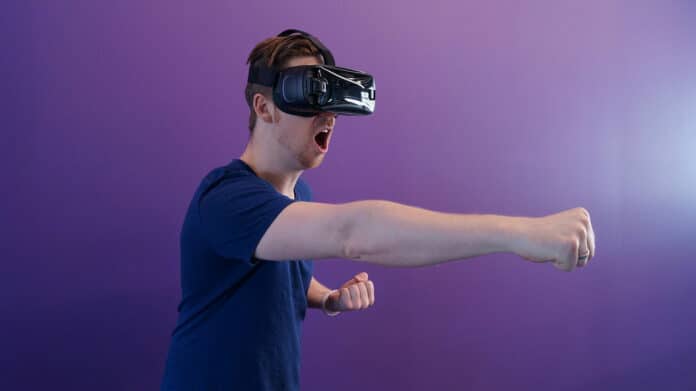The malaise symptoms of cybersickness are thought to be related to the sensory conflict present in the exposure to virtual reality (VR) content. When there is a sensory mismatch in the process of sensory perception, the perceptual estimate has been shown to change based on a reweighting mechanism between the relative contributions of the individual sensory signals involved.
A new study accessed why some people get motion sick playing VR games while others don’t. Scientists from the University of Waterloo found that the subjective visual vertical – a measure of how individuals perceive the orientation of vertical lines – shifted considerably after participants played a high-intensity VR game.
The study suggests that the severity of a person’s cybersickness is affected by how our senses adjust to the conflict between reality and virtual reality.
According to scientists, this knowledge could be invaluable for developers and designers of VR experiences, enabling them to create more comfortable and enjoyable environments for users.
Scientists gathered thirty-one volunteers’ data. Before and after participating in two VR games, one with high intensity and one with medium intensity, they evaluated their perceptions of the vertical.
The highest shift in the subjective visual vertical following exposure to VR, particularly at a high intensity, was more likely to be observed in those who felt less queasy. On the other hand, those with the most cybersickness were less likely to have altered their perception of vertical lines. There were no appreciable changes between participants with limited and high gaming experience or between males and females.
Co-author William Chung, a former Waterloo doctoral student now a postdoctoral fellow at the Toronto Rehabilitation Institute, said, “While the subjective vertical visual task significantly predicted the severity of cybersickness symptoms, there is still much to be explained.”
“By understanding the relationship between sensory reweighting and cybersickness susceptibility, we can potentially develop personalized cybersickness mitigation strategies and VR experiences that take into account individual differences in sensory processing and hopefully lower the occurrence of cybersickness.”
Journal Reference:
- Chung, W., Barnett-Cowan, M. Sensory reweighting: a common mechanism for subjective visual vertical and cybersickness susceptibility. Virtual Reality (2023). DOI: 10.1007/s10055-023-00786-z
